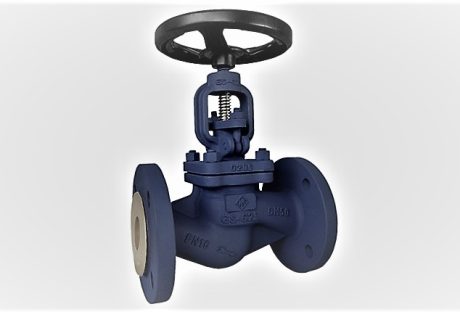Tag: Know About Steam Valves

Everything You Need To Know About Steam Valves
You cannot regulate steam and hot water vapor flow and pressure without using steam valves. Steam is employed in a variety of industrial processes. It is used to power turbines that generate energy, as well as to process food, chemicals, engine parts, and other products. Cleaning, humidification, and heating are all done with steam. Therefore, most applications necessitate regulation, and steam control valves play a crucial role in this. The most common use of valves with steam lowers the incoming steam pressure for process purposes. A state-of-the-art automated valve ensures maximum delivery and process efficiencies by adjusting steam pressure and flow. What Are The Type Of Valves Used In Steam Applications? Many various kinds of valves are accessible for use in steam operations. But each valve must meet the requirements of the specific application. For example, 3-piece ball isolation valves with PTFE coated stainless steel gaskets and seals. In a steam application, safe, high pressure steam valves are an essential component of equipment. These valves, also known as Pressure Relief Valves or PRVs, are created to be employed as a piping installation's safety element. These have a pre-set strength rating to protect all gear in the pressure line if the pressure exceeds the valve's maximum permitted pressure. It works by releasing pressure and enabling steam to flow out from the line by releasing its set. Conversely, it will manually seal and preserve the specified pressure if it falls below the set pressure. 6 Major Applications: The circulation of steam from the origin (boiler) to the point where it will be applied is controlled by valves. Steam valves are being used to regulate the steam discharge amount and hot water vapor in a system. Below are some prominent applications of steam valves: 1. Processing Food processing facilities, along with special refineries, chemical plants, etc., all have steam heating applications. Process fluid heat exchangers, reactors, combustion air preheaters, reboilers, and other forms of heat transfer equipment employ saturated steam valves as a source of heat. 2. Power Steam valves are used to power turbines linked to generators in coal, nuclear, gas, and solar power plants. In these operations, both superheated and saturated steam is utilized. 3. Atomization For segregating the liquids, steam valves can also be used to pulverize a liquid. Breaking up gasoline into tiny droplets to increase combustion efficiency is one example. 4. Moisturization Steam can be used to provide water to an operation while also providing heat energy. 5. Cleaning When it comes to industrial or residential MAINTENANCE & REPAIR, steam can be used to wash a variety of surfaces. Steam valves sterilize food prep gear at a high temperature. Steam treatment has long been used to clean grease and debris from manufacturing machinery in readiness for maintenance or painting. 6. Heating Low-pressure saturated steam valves are the primary heat source providing indoor heating in many big commercial and industrial buildings. Existing plant steam can be used by HVAC units and air handlers effectively to humidify the airflow for interior shelter and convenience of goods and equipment. Additional notable steam valves applications include: Steam forming engines for felt Sterilizers with autoclaves facility HVAC equipment Fluid heat exchangers Directing the sanitary heaters with steam injection Ironers and press machines Water treatment facilities available plants Boilers & re-boilers Keg cleaners Commercial dishwashers Power generating turbines 4 Essential Specifications For Steam Valves When choosing the right valves, many considerations must be taken into account. There must be concerns about the environment, connection, actuators, pressure, temperature, and other service variables. After determining the right valve type and size depending on system pressure and flow requirements, valve bodies, actuators, connections, and component materials are chosen. Threaded, flanged, and compression-fit connections are used for steam valves. Aluminum, cast iron, bronze, steel, copper, brass, and stainless steel are all possible construction materials. Steam valve and actuation are accomplished using standard valve actuation techniques such as: A hand-operating system while wheel or crank is used to open or close manual equipment. Electric actuators are used in electric equipment. Electric and pneumatic valves are widely available, and they are activated by solenoids and air pressure. The opening and closing of a pneumatic valve are controlled by a pneumatic actuator or cylinder. A temperature difference in the treated media activates thermally actuated valves. When a predefined temperature is attained, pressure and temperature relief usually occur. 5 Types Of Valves Despite the fact that most examples of steam valves may regulate steam flow, steam has unique service requirements in terms of temperature and pressure. Here is a list of the most regularly used valves: Ball valves Globe valves Butterfly valves Gate or knife valves Diaphragm valves Conclusion If you're completely new to the world of steam valves, we hope the preceding guide will be helpful. Only if you have the proper knowledge can you choose the best product. But for selecting the correct valves for your use. You have to pick the products which are matching up your exact requirements. So which types of valves are your current requirement? Comment back to us and let us know your opinion about valves. Read Also: How Cutting Edge Technology is Helping Dubai Improve its Healthcare Services 10 Cool Technologies on Private Jets 5 Technologies Disrupting The Construction Industry How New POS Technology is Advancing Merchant Processing
READ MOREDetails















